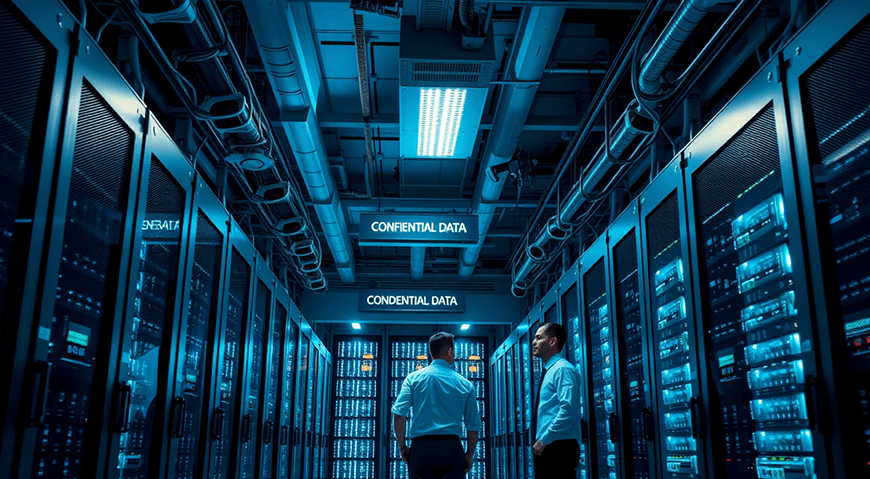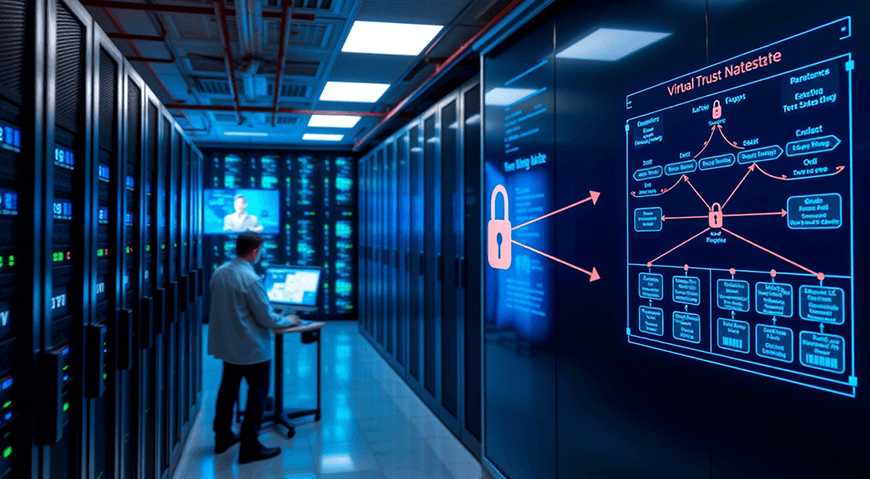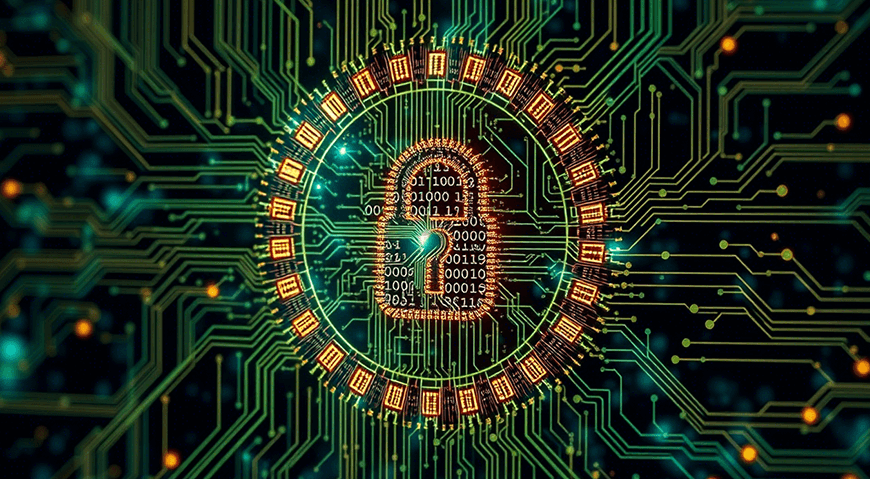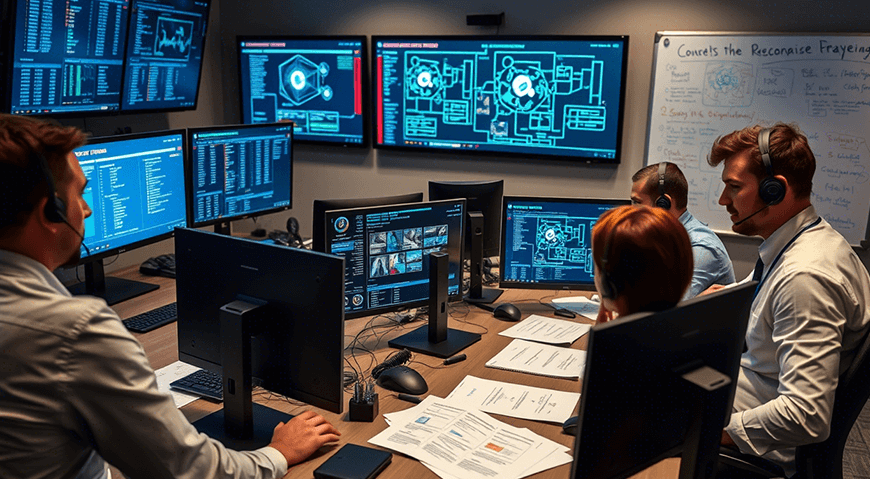Data Center Security: Protecting the Most Valuable Asset of the Digital Age
In a world where data has surpassed oil as the most valuable resource, data center security
is not just a technical consideration: it is an existential necessity. A single
security incident can destroy decades of trust-building, cost millions in direct losses,
and cause incalculable damage to a company's reputation.
Data center security is a multidimensional ecosystem that ranges from the most basic physical protection
to the most sophisticated cybersecurity systems. It is not just about installing
cameras and firewalls; it is about creating an impenetrable digital fortress that protects against threats
that are constantly evolving and attackers who become more sophisticated every day.
As stated by the National Institute of Standards and Technology (NIST):
"Data center security should be viewed as an integrated system where each component
—from physical access control to data encryption—works together to create
multiple layers of protection that ensure the confidentiality, integrity, and availability of
critical information."

Specific Cybersecurity for Data Centers: Beyond the Traditional Firewall
Cybersecurity in data centers transcends traditional IT security measures.
It requires a specialized approach that considers the unique characteristics of these environments: high
density of critical systems, massive connectivity, complex virtualization, and 24/7 operation.
Zero Trust Security Architecture
The Zero Trust model has revolutionized data center security by eliminating the concept of a
"trusted perimeter." Instead of assuming that everything inside the network is secure, this approach verifies
every connection and transaction, regardless of its origin.
-
Continuous verification: Every user, device, and application must be authenticated
constantly.
-
Principle of least privilege: Minimum access necessary to perform
specific functions.
-
Micro-segmentation: Division of the network into small, highly controlled zones.
-
Behavioral monitoring: Anomaly detection based on normal behavior patterns.
Protection Against Advanced Persistent Threats (APTs)
Data centers are premium targets for sophisticated attackers who can remain hidden
for months or years. Effective defense against APTs requires:
-
Threat intelligence: Systems that learn from global attacks to anticipate
new techniques.
-
Behavioral analysis: AI that detects suspicious activities even when they do not
match known signatures.
-
Advanced sandboxing: Isolated environments to analyze potentially malicious code.
-
Proactive threat hunting: Active search for threats before they cause damage.
Security in Virtualized and Cloud Environments
Virtualization introduces unique attack vectors that require specialized security measures:
-
Hypervisor security: Protection of the software that manages virtual
machines.
-
Isolation between VMs: Prevention of escape attacks between virtual machines.
-
Container security: Specific protection for architectures based on Docker
and Kubernetes.
-
Hybrid identity management: Consistent access control between physical
and virtual environments.

Advanced Physical Security Protocols: The First Line of Defense
Physical security in modern data centers goes far beyond guards and locks. It incorporates
cutting-edge technologies and meticulously designed protocols that create multiple layers of
protection, each more sophisticated than the last.
Biometric and Multifactor Access Control
Modern access systems combine multiple authentication factors to create a
virtually impenetrable control:
-
Advanced biometrics: Fingerprint, iris, palm vein, and
3D facial pattern recognition.
-
Smart cards: Encrypted credentials with RFID or NFC technology.
-
Dynamic PIN codes: Numbers that change according to temporal algorithms.
-
Behavioral authentication: Analysis of movement patterns and typing speed.
Physical Intrusion Detection and Prevention Systems
Early detection is crucial to prevent unauthorized access:
-
Perimeter sensors: Detection of vibration, fence cutting, and movement in
restricted areas.
-
Intelligent video analytics: Cameras with AI that automatically detect suspicious behavior.
-
Floor weight systems: Detection of human presence through pressure changes.
-
Advanced infrared sensors: Detection of body heat with
anti-false alarm algorithms.
Layered Security Architecture (Defense in Depth)
Data centers implement multiple concentric security perimeters:
-
Outer perimeter: Electrified fences, security lighting, and patrolling.
-
Main building: Armored doors, security vestibules (mantraps), and
controlled reception.
-
Equipment zones: Role-based restricted access, airlocks, and
continuous monitoring.
-
Individual cabinets: Smart locks and opening sensors per rack.
Protection Against Extreme Physical Threats
Data centers must protect against threats that go beyond unauthorized access:
-
Seismic protection: Anti-seismic structures and damping systems.
-
Resistance to natural disasters: Design to withstand hurricanes, floods, and
tornadoes.
-
Advanced fire protection: Ultra-early detection systems and
suppression with inert gases.
-
Electromagnetic shielding: Protection against electromagnetic pulses (EMP) and
interference.

Regulatory Compliance by Sector: Navigating the Regulatory Maze
Regulatory compliance in data centers is not a one-time exercise; it is a continuous process that must
adapt to multiple jurisdictions, industrial sectors, and constantly evolving regulatory frameworks.
The complexity increases exponentially when data centers serve multiple
sectors or operate internationally.
Main Global Regulatory Frameworks
Personal Data Protection
-
GDPR (Europe): Global gold standard with fines of up to 4% of global annual revenue.
-
CCPA/CPRA (California): State regulations with global reach due to the size
of the Californian market.
-
LGPD (Brazil): General Law for the Protection of Personal Data with requirements similar
to GDPR.
-
LFPDPPP (Mexico): Federal Law on Protection of Personal Data Held by
Private Parties.
Financial Sector
-
PCI DSS: Security standards for payment card processing.
-
SOX (Sarbanes-Oxley): Financial controls for US public companies.
-
Basel III: International banking supervision frameworks.
-
COSO: Integrated internal control framework.
Health Sector
-
HIPAA (United States): Protection of personal medical information.
-
FDA 21 CFR Part 11: Electronic records and digital signatures in pharmaceuticals.
-
MDR (Europe): Medical Device Regulation.
Compliance Implementation Strategies
Continuous Compliance Approach
Modern compliance requires constant monitoring and adjustment:
-
Automated audits: Systems that verify compliance in real time.
-
Continuous reporting: Dashboards that show compliance status by regulation.
-
Proactive alerts: Notifications when systems deviate from
regulatory requirements.
-
Automatic documentation: Generation of compliance evidence without
manual intervention.
Multi-tenancy Regulatory Management
When a data center serves multiple sectors simultaneously:
-
Logical segregation: Separation of data by specific regulatory requirements.
-
Granular policies: Specific controls by data type and applicable regulation.
-
Differentiated audits: Verification processes adapted to each regulatory framework.
-
Specialized reporting: Customized reports for different regulatory bodies.
Incident Management and Recovery: When Everything Goes Wrong
No matter how robust the security systems are, incidents are inevitable. The difference between
successful organizations and those that fail lies not in avoiding all incidents, but in the
speed, efficiency, and completeness of their response when they occur.
Incident Response Framework
Phase 1: Detection and Analysis
-
Automatic detection: SIEM systems that correlate events and detect anomalous
patterns.
-
Initial triage: Automatic classification of severity and type of incident.
-
Preliminary forensic analysis: Preservation of digital evidence for later
investigation.
-
Initial communication: Notification to stakeholders according to predefined protocols.
Phase 2: Containment and Eradication
-
Immediate containment: Isolation of affected systems to prevent propagation.
-
Impact analysis: Full assessment of compromised systems and data.
-
Threat eradication: Complete removal of malware, backdoors, and
exploited vulnerabilities.
-
Cleanliness validation: Verification that all attack vectors have been
eliminated.
Phase 3: Recovery and Post-Incident Monitoring
-
Gradual restoration: Return to normal operation in phases, with intensive monitoring.
-
Integrity validation: Verification that data and systems are working
correctly.
-
Extended monitoring: Increased surveillance during the post-incident period.
-
Resolution communication: Formal notification of incident closure.
Business Continuity and Disaster Recovery Plans
Backup and Recovery Strategies
-
Evolved 3-2-1 rule: 3 copies of data, on 2 different media, with 1 offsite and
immutable.
-
Continuous backup: Real-time replication for RPO (Recovery Point Objective)
close to zero.
-
Automated testing: Regular verification of the integrity and recoverability of
backups.
-
Granular recovery: Ability to restore from individual files to
complete applications.
Recovery Sites
-
Hot sites: Fully equipped facilities ready for immediate operation.
-
Warm sites: Partially equipped facilities with intermediate activation time.
-
Cold sites: Prepared spaces but require complete installation of equipment.
-
Cloud DR: Cloud-based recovery for flexibility and
cost-effectiveness.
Crisis Management and Communication
Communication during a security incident can determine the long-term impact on the
organization's reputation and trust:
-
Crisis teams: Multidisciplinary groups with clearly defined roles and responsibilities.
-
Communication templates: Pre-approved messages for different types of
incidents.
-
Communication channels: Multiple ways to reach different audiences
(customers, regulators, media).
-
Calculated transparency: Balance between necessary transparency and protection of
sensitive information.

The Future of Security: Towards Self-Adapting Data Centers
Data center security is evolving towards increasingly intelligent and
autonomous systems. The next innovations promise to radically transform how we protect our most
valuable digital assets:
-
Autonomous Defensive AI: Systems that not only detect threats, but also adapt and
respond automatically.
-
Quantum Security: Preparation for the post-quantum era with new
encryption algorithms.
-
Security Mesh: Distributed architectures where each component is a
security control point.
-
Predictive Behavior: Analysis that anticipates attacks before they occur
based on global patterns.
In a world where data continues to be the most valuable asset, data center security
will continue to evolve, adapt, and strengthen to face threats we cannot yet
imagine. Investment in security is not an expense; it is the premium on an insurance policy that protects the
digital future of humanity.

